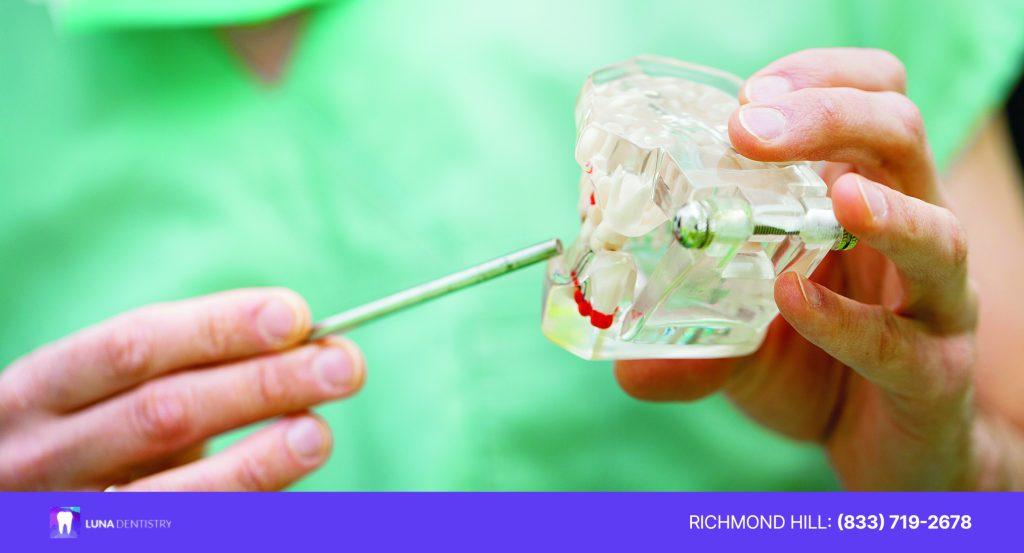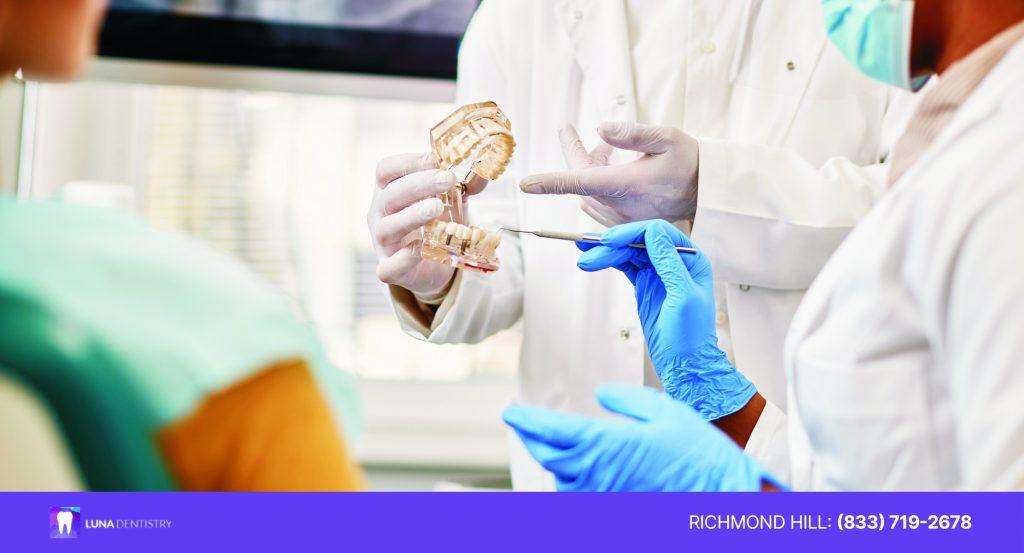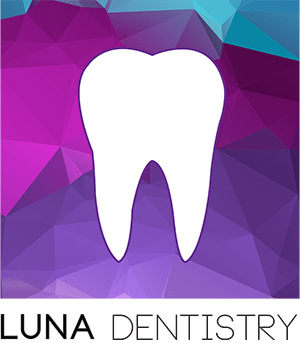Signs Of A Failed Dental Bone Graft | Richmond Hill Dentist

If you’ve recently undergone a dental bone graft, you know how important it is for successful dental implants. Bone grafts create a strong foundation for implants and improve oral health overall. But, as with any medical procedure, things sometimes go differently than planned. Fortunately, your body has a way of letting you know when something isn’t quite right. By learning to recognize early signs of a failed dental bone graft, you can take action and ensure care for your dental health.
As a trusted dentist in Richmond Hill, we want you to feel well-informed, empowered, and assured in recognizing these signs. Remember, paying close attention to small changes and sensations can make a significant difference in your overall well-being. Let’s dive into what you should keep an eye out for!
What Is a Dental Bone Graft, and Why Do People Need It?
A dental bone graft is a dental treatment that adds bone tissue to areas where jawbone density is insufficient. This is often done before placing dental implants to ensure they have a stable foundation. Some reasons people might need bone grafts include:
- Bone Loss from Gum Disease: Complicated periodontal disease can cause jawbone deterioration.
- Tooth Loss: Missing teeth over time can lead to bone shrinkage.
- Preparation for Implants: The jawbone needs sufficient thickness and density to hold implants securely.
For seniors, bone grafts are often necessary due to natural bone density loss over the years. However, it’s important to monitor the healing process closely, as the body sometimes signals when something isn’t right.
The Early Signs of a Failed Dental Bone Graft

Your body has a unique way of speaking to you—sometimes loudly, sometimes subtly. Here are key signs that may indicate your bone graft isn’t healing as it should. If you notice these signs, consult your Richmond Hill dentist to ensure everything is on the right track.
1. Persistent or Worsening Pain
Experiencing some pain after surgery is normal. But if the pain persists or worsens weeks after your procedure, it could be a sign of bone graft failure. If the discomfort isn’t manageable with prescribed pain relievers or if it feels deep and throbbing, it’s wise to reach out to your dentist. Unusual pain is the body’s way of saying, “Hey, something might be wrong here.”
2. Redness, Swelling, and Inflammation
A little swelling is normal initially, but ongoing or increasing swelling, redness, and warmth in the grafted area could mean there’s an infection. This can compromise the bone graft’s stability and healing. Your dentist can assess if antibiotics or further intervention is necessary to prevent further complications.
3. Pus or Foul Odour
If you notice pus or a foul taste or smell, it’s usually a sign of infection. Bacterial buildup in the area around the graft can prevent the graft from healing properly. If left untreated, infection can spread to surrounding tissues, worsening the issue. Trust your senses—if something doesn’t feel (or smell) right, it’s best to check it out.
4. Gum Tenderness and Receding Gums
The gums around the bone graft should heal smoothly. If you feel consistent tenderness, particularly when pressing on the gum line, this could be an early sign of graft failure. Additionally, receding gums around the grafted area may indicate that the graft isn’t integrating well with your existing bone.
5. Movement or Looseness of the Grafted Area
Once healed, the bone graft should feel stable. If you notice any shifting or loosening, this could mean the graft hasn’t fused with your existing bone as expected. This can happen if the grafted bone is not integrating or if excessive pressure is placed on it too soon after surgery.
Listening to Your Body’s Signals
Taking a moment to tune into what your body is telling you can go a long way. It’s common to brush off minor aches and pains, but don’t hesitate to call your dentist when it comes to post-surgery signs. Sometimes, a follow-up can make all the difference in catching potential issues early and taking corrective action.
As a dentist in Richmond Hill, we understand that recognizing these signals can feel daunting. But remember, early detection often leads to simpler, less invasive treatments.
Common Questions About Bone Graft Recovery

How Long Does Recovery Take?
Recovery times vary. Most people find initial healing takes about two weeks. However, full graft integration with the jawbone can take several months. Being mindful of signs of failure during this period is important. It’s also worth noting that healing might be slower for seniors, so patience and regular check-ins with your Richmond Hill dentist can be helpful.
Can I Eat Normally After a Bone Graft?
Soft foods are encouraged initially to avoid placing stress on the grafted area. Hard or crunchy foods should be avoided until the graft has properly healed. Ask your dentist about which foods are safe to enjoy during recovery.
Is It Safe to Drink Coffee After Surgery?
While tempting, coffee and other hot beverages should be avoided immediately post-surgery, as they can increase swelling.
When to Call Your Richmond Hill Dentist

While it’s great to be aware of potential signs of bone graft failure, it’s equally important to remember that most people heal without complications. However, if you encounter any of the following, don’t hesitate to call your Richmond Hill dentist:
- Pain that worsens after the initial week of recovery
- Persistent swelling, redness, or warmth around the graft
- Signs of infection, such as pus or foul odour
- Gum recession around the graft area
- Movement or instability in the grafted area
Dentists are trained to address these issues and provide reassurance or additional treatments when necessary. Don’t worry about “bothering” your dentist; they’re here to help.
You can also learn how to identify and monitor bone grafting complications by staying informed through educated workshops and conferences where dental bone grafting and other procedures are discussed regularly.
Conclusion: Trusting Your Instincts for a Healthy Recovery
Healing after a bone graft is a process, and it’s only natural to feel a bit anxious about it. However, by trusting your instincts and paying attention to what your body tells you, you can catch early signs of issues and take timely action. From persistent pain to gum changes, every signal your body sends is a valuable clue about your health.
If you have questions about your bone graft or any post-surgery concerns, reach out to your dentist in Richmond Hill. We’re here to guide you through a healthy recovery and make sure your smile remains strong and secure for years to come.


